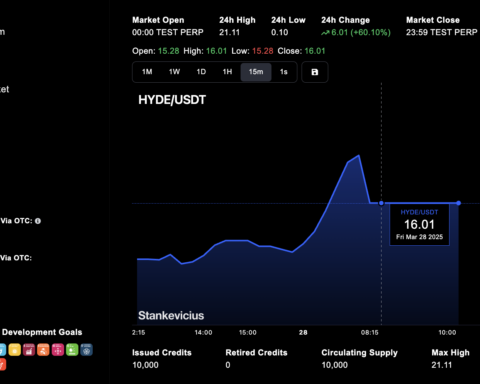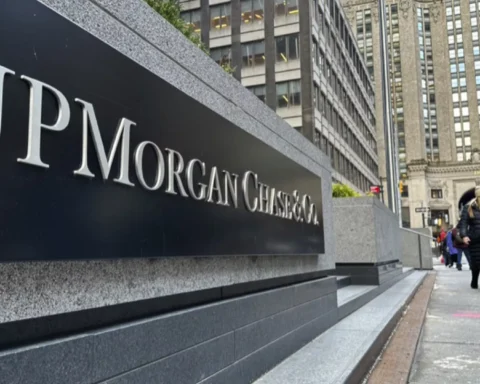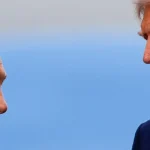President Donald Trump has announced a bold and potentially game-changing trade policy: a proposed 100% tariff on all imported computer chips unless semiconductor companies commit to building or expanding manufacturing facilities on U.S. soil. The move reflects growing concerns over America’s supply chain vulnerabilities and the strategic importance of semiconductor technology in the global economy and national security.
The Context: Semiconductor Supply Chain Challenges
Over the past several years, the world has experienced severe chip shortages that have disrupted industries from automotive to consumer electronics. The COVID-19 pandemic exposed critical weaknesses in global supply chains, with heavy reliance on Asian manufacturing hubs—particularly Taiwan, South Korea, and China—creating vulnerabilities for the U.S. and its allies.
Recognizing semiconductors as the “brains” behind modern technology, the U.S. government has been pushing for increased domestic production through initiatives such as the CHIPS and Science Act, which provides billions in subsidies for American chip fabrication plants. Trump’s tariff threat, however, ups the ante by leveraging trade policy to coerce industry action.
Details of the Proposed Tariff
Trump’s announcement calls for:
- A 100% tariff on all imported computer chips and related components starting within the next 12 months.
- An exemption or rollback of tariffs for firms that commit to establishing or significantly expanding semiconductor fabs in the United States within the next three years.
- Potential penalties for companies that delay or fail to meet domestic production benchmarks.
The tariff would apply broadly across chip types, including logic chips, memory chips, and specialized processors used in AI, telecommunications, automotive systems, and military applications.
Industry and Economic Impact
The announcement has sent shockwaves through the semiconductor industry:
- Chip Manufacturers: Major players like Intel, TSMC, Samsung, and GlobalFoundries now face increased pressure to accelerate U.S. fab expansions. For companies without existing U.S. plants, the cost of tariffs could become prohibitive, forcing strategic reconsiderations.
- Tech Companies: Firms that rely heavily on imported chips, from Apple to automotive OEMs, worry about cost increases and supply disruptions. Passing tariff-related costs to consumers could spur inflation in electronics and vehicles.
- Global Trade Dynamics: The policy risks aggravating tensions with key chip-producing countries, potentially triggering retaliatory tariffs or export restrictions.
Economists warn that while the tariff could incentivize reshoring, it also risks short-term price spikes and strained international relations.
Strategic Rationale
Trump’s tariff threat is rooted in national security concerns. Semiconductors are critical for military technology, communications, and infrastructure. Dependence on foreign sources—especially those potentially hostile to U.S. interests—is seen as a strategic risk.
By making tariffs contingent on domestic production, Trump aims to:
- Stimulate investment in U.S. manufacturing capabilities.
- Reduce reliance on foreign suppliers vulnerable to geopolitical disruptions.
- Create American jobs in high-tech sectors.
Political and Diplomatic Reactions
The proposal has elicited mixed responses:
- Supporters praise the tough stance as necessary to regain technological sovereignty and bolster America’s industrial base.
- Critics caution that a 100% tariff is extreme, could violate WTO rules, and might trigger damaging trade wars.
- Several foreign governments have expressed concerns, warning that such tariffs could disrupt global supply chains vital to their own economies.
Next Steps and Outlook
Whether Trump’s tariff threat will translate into formal policy depends on political developments and industry negotiations. The move adds urgency to ongoing debates in Washington about balancing free trade with strategic industrial policy.
Meanwhile, semiconductor companies are likely to weigh the costs of tariffs against investment decisions. Some may accelerate U.S. fab projects, while others may lobby for exemptions or delay expansions pending clearer rules.
Conclusion
Trump’s declaration of a potential 100% tariff on imported computer chips represents a high-stakes attempt to reshape the global semiconductor landscape. By tying trade costs directly to domestic manufacturing, the policy aims to strengthen America’s tech independence but carries risks of market disruption and international friction. The coming months will reveal how industry, government, and global partners respond to this ambitious push to “bring chipmaking home.”




























